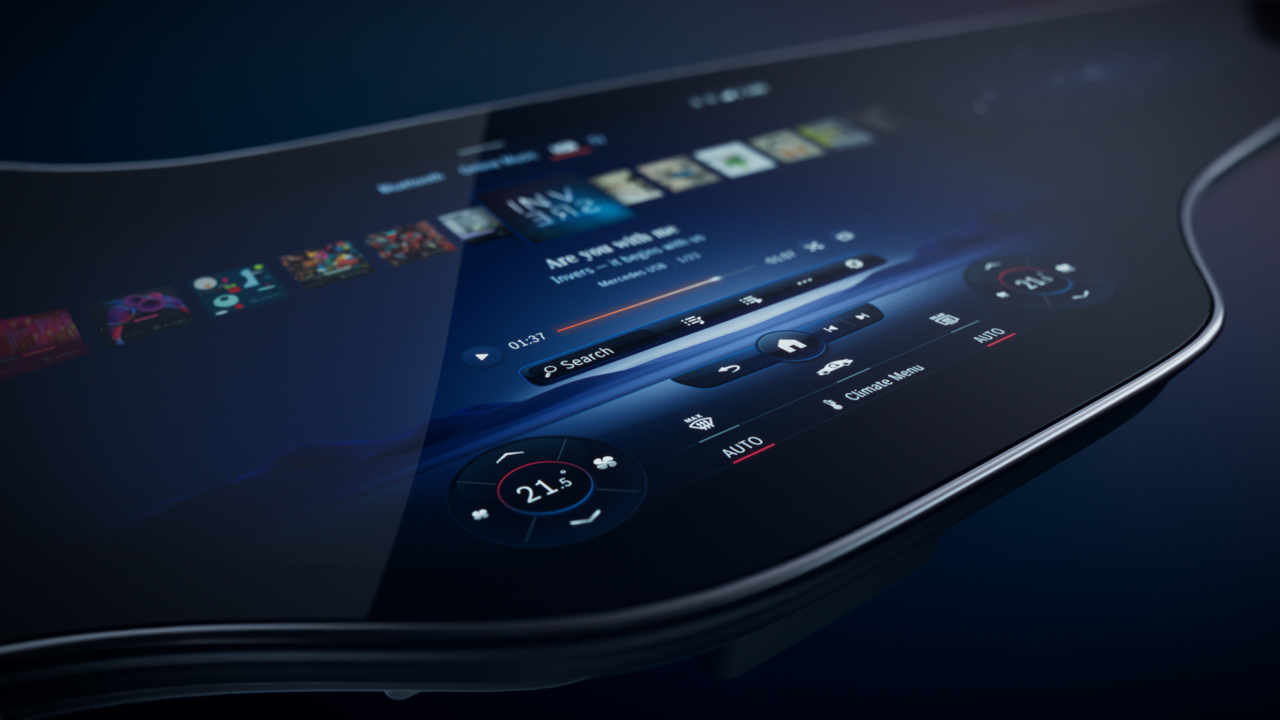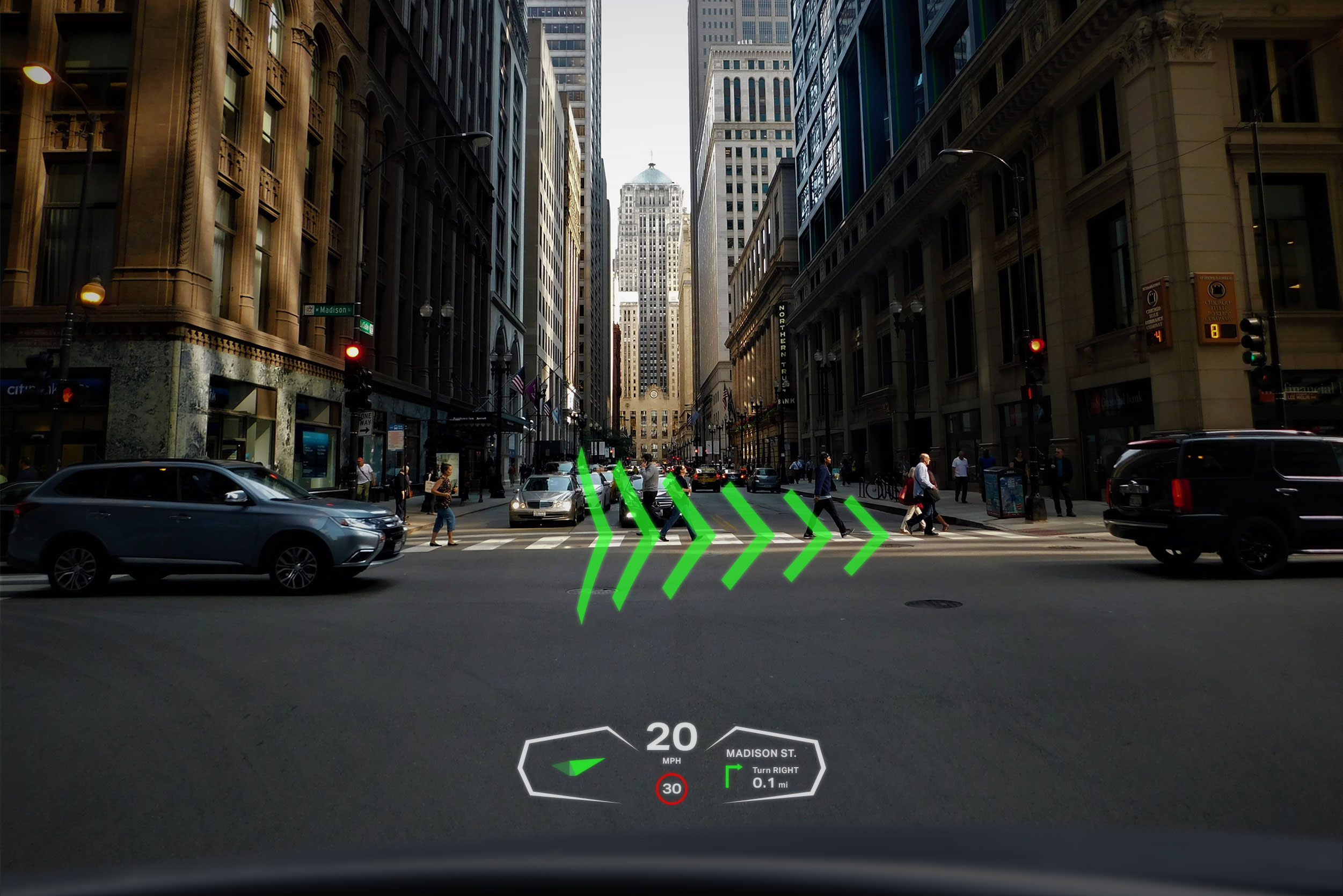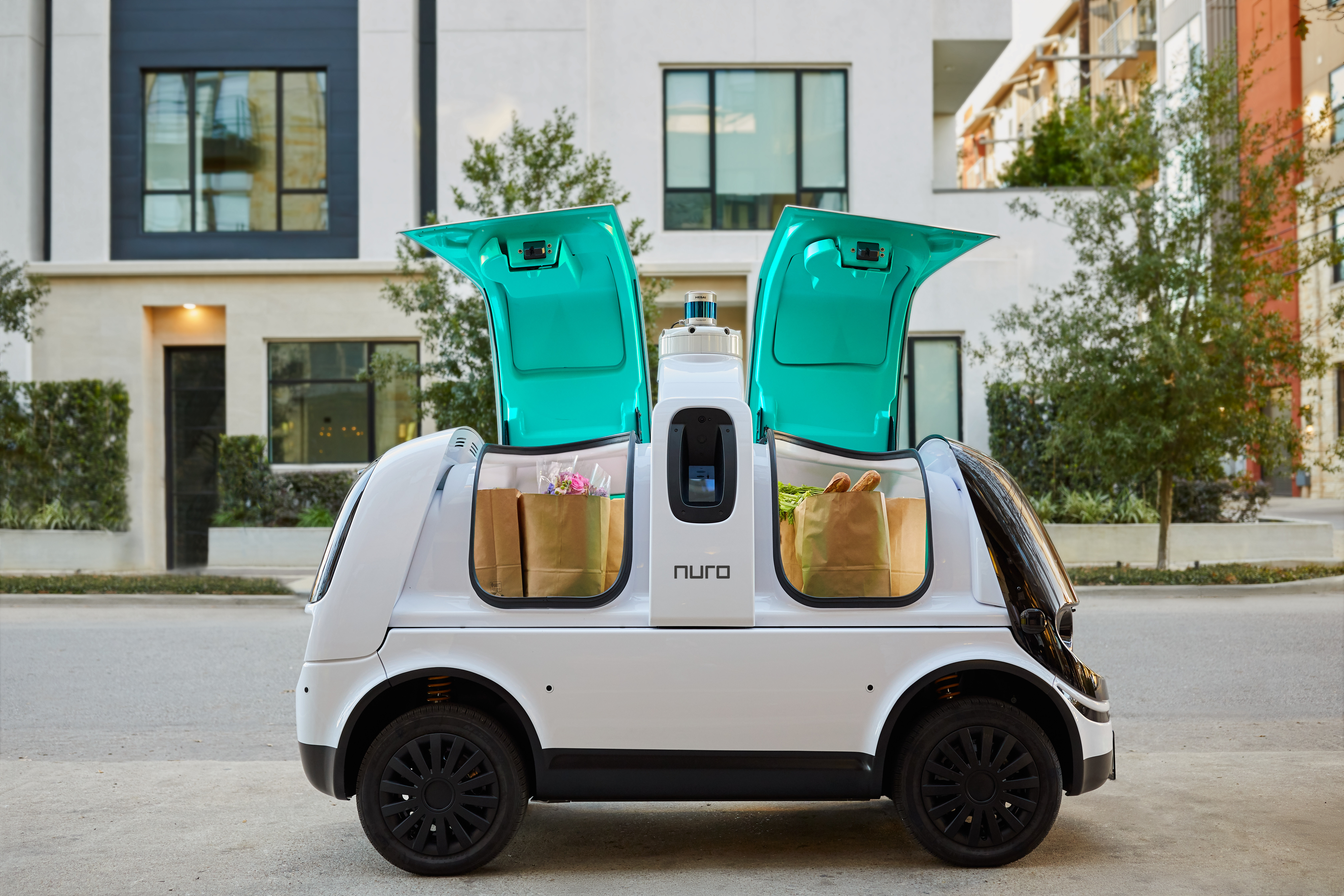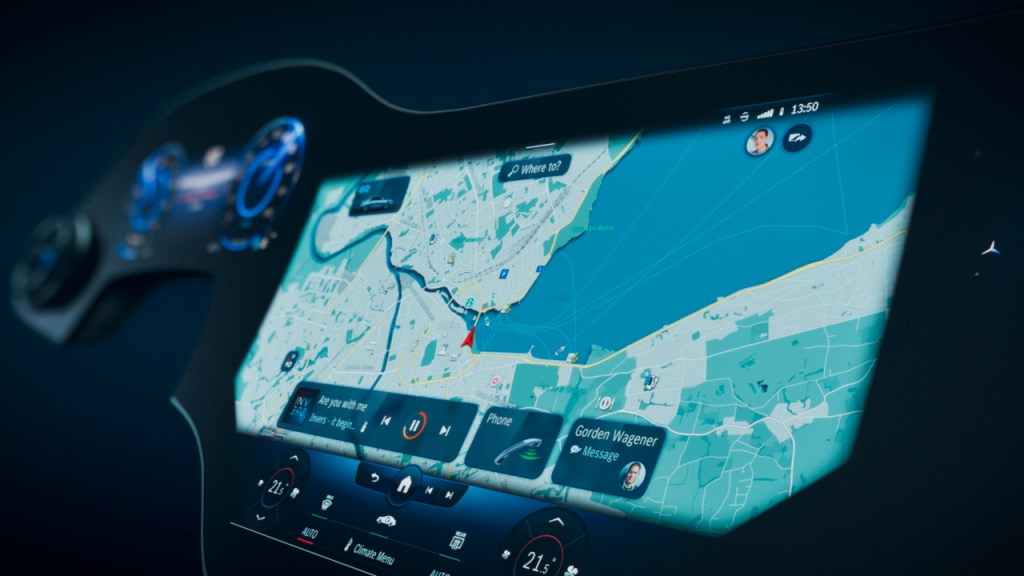The Station is a weekly newsletter dedicated to all things transportation. Sign up here — just click The Station — to receive it every Sunday in your inbox.
Hi friends and new readers, welcome back to The Station, a newsletter dedicated to all the present and future ways people and packages move from Point A to Point B.
Last week, I provided some of my predictions for 2021 focused on autonomous vehicle technology and electric vehicles. I’ll weigh in today with a few predictions about the rest of the “future of transportation” sector, including ride-hailing, on-demand delivery and in-car tech.
Email me at kirsten.korosec@prod22.techcrunch.com to share thoughts, criticisms, opinions or tips. You can also send a direct message to me at Twitter — @kirstenkorosec.
Alrighty, here’s the remaining predictions for 2021.
Delivery 
On-demand delivery will continue to grow even as consumers return to physical stores, which will put pressure on the logistics ecosystem. The retailers that have the best success will be the ones that have locked in multiple channels to get their “goods” to the consumer.
Big retailers and even smaller local stores have come to understand that their physical location has become an extended part of the supply chain. Startups that have developed platforms to make it easier to manage inventory and get it to the consumer will continue to pop up.
Meanwhile, the increase in demand for delivery will encourage giants like Amazon and Walmart to invest in technological solutions to meet their needs. This might include partnering with or acquiring startups. (This goes beyond interests in longer-term efforts like autonomous vehicle delivery.)
Delivery apps such as Uber Eats, DoorDash and Instacart will face increased scrutiny for use of gig economy workers as well as whether businesses benefit from using them. This may very well spawn local businesses to find their own in-house solutions. Demand will rise for digital tools that help optimize delivery fleets and platforms designed to help companies gets goods to consumers without relying on Uber, DoorDash and others.
Restaurant groups will pull together to offer delivery hubs from ghost kitchens, a prediction that mirrors one shared with me from Khaled Naim, the CEO of last-mile delivery management software startup Onfleet. I believe local stores will make the same efforts.
I expect more pitches from companies hawking curbside management tools and subscription delivery platforms.
On the ride-hailing front, shuttle companies like Via will continue to grow (despite concerns about sharing rides) and make acquisitions to round out their current offerings. Via will continue to sell its platform to cities as opposed to standing up more of its own operations. Via handles booking, routing, passenger and vehicle assignment and identification, customer experience and fleet management. And it will likely look for ways to broaden its services to become more appealing.
In-car tech
Some of the trends that started two years ago will continue to play out. Automakers are increasing the size and display resolution of infotainment screens in vehicles. Sadly, only a handful will unlock the more important piece of the infotainment system: the user interface.
Two announcements this past week — one from holographic startup Envisics and the other from Mercedes — hint at what’s to come in 2021.
Mercedes unveiled January 7 its next-generation MBUX Hyperscreen, which features a 56-inch curved screen that runs the length of the dashboard. The MBUX Hyperscreen will be optional in the 2022 Mercedes EQS, the flagship sedan under the automaker’s electric EQ brand.

I’m interested in and maybe even encouraged by (I have yet to test it) the UI. Mercedes chose to put information on charging, entertainment, phone, navigation, social media, connectivity and massage — yes massage — right up front on the screen. This means no scrolling through menus or using the voice assistant to locate these options.
The system’s software, which will learn the patterns of the driver, will prompt the user, removing any need to go deeper into the sub-menu. The navigation map is always visible in the center and located just below it are the controls for the phone and entertainment — or the feature that best suits the specific situation, according to the automaker.
Meanwhile, Envisics announced a partnership with Panasonic Automotive Systems to jointly develop and commercialize a new generation of head-up displays for cars, trucks and SUVs.
Holographic startup Envisics partners with Panasonic to fast-track in-car AR tech
Envisics’ technology allows for head-up displays to have higher resolution, wide color gamut and large images that can be overlaid upon reality. The technology can also project information at multiple distances simultaneously. The company’s founder Jamieson Christmas told me that in the short term this will provide relatively simple augmented reality applications like navigation, highlighting the lane you’re supposed to be in and some safety applications.

“But as you look forward into things like autonomous driving it unlocks a whole realm of other opportunities like entertainment and video conferencing,” he said.
Finally, I expect more chatter and maybe even deployments of driver monitoring systems as automakers roll out more advanced driver assistance systems that allow for “hands-free” operations in certain conditions.
I want to stress however, that having a DMS is only part of the solution. The safe operation of an advanced driver assistance system comes down to how well the driver understands the features and can easily see or hear when they’re on and off. A number of vehicle models, with the regular ol’ less-advanced versions of ADAS, already fail at properly communicating to drivers when features are on and off. My hope for 2021 and beyond is that there’s an effort to improve this shortfall.
For those who missed last week’s predictions, here is my recap on AVs and EVs.
Autonomous vehicles
The wave of consolidation that began in 2020 will continue this year, leaving fewer players that are aiming to commercialize autonomous vehicle technology in three distinct areas: robotaxis, trucking and delivery.
In 2020, Starsky Robotics shut down, Uber sold its self-driving subsidiary to Aurora and autonomous delivery startup Nuro acquired Ike Robotics. This evolution is not yet complete.
I’ll be paying attention to the activities of all the big AV players, including Cruise, Motional, Waymo and Zoox. I’m particularly interested in how Aurora will handle absorbing Uber ATG into its operations. I’m also watching for progress at Argo AI, which has spent the past several months integrating VW’s self-driving subsidiary Autonomous Intelligent Driving (AID) into its operations.
I expect big moves by the often-overlooked Voyage, including new partnerships and driverless operations.
Autonomous delivery will see the most investment, consolidation and commercialization activity in 2021. This won’t be the year when autonomous delivery becomes ubiquitous. But expect more pilot programs in urban, and even suburban and rural areas as companies try to figure out what environment and form factor — sidewalk bots, purpose-built vehicles that operate on roads or drones — produces the best economics.
New regionally focused entrants will pop up in 2021 and drone delivery companies will expand to larger geofenced areas.
I’m also curious to see what becomes of Postmates’ autonomous robot now that Uber has completed its acquisition of the on-demand delivery company.

Companies pursuing autonomous trucking are going to learn that long-haul logistics are more difficult and expensive than previously thought. While companies will continue to focus on Class 8 trucks that can operate without a human, expect greater activity in the so-called middle-mile logistics market. This is an area that startup Gatik AI has targeted with some successful results.
The middle-mile market, in which autonomous trucks run frequent trips from large distribution centers to local retailers, will become increasingly important as consumers continue to order groceries and other goods online. Amazon, Walmart and Kroger are just a few of the large and deep-pocketed companies keenly interested in finding faster and cheaper ways to move goods. Expect more investments and even acquisitions from big retailers.
Autonomous vehicle regulations in the United States will shift in 2021 due to the new Biden Administration. The changes won’t happen immediately; there will be far more activity in 2022 and beyond. But there will be change nonetheless.
The Trump administration has taken a light touch to autonomous vehicle development and deployment, choosing to stick with voluntary guidelines instead of creating new mandatory rules. For instance, last month the National Highway Traffic Safety Administration posted a notice that clarified AV policy and seemed to make the path to deployment much easier. (Read the details in my December 21 newsletter.)
President-elect Joe Biden nominated former Democratic presidential candidate Pete Buttigieg as the next Secretary of Transportation, a Cabinet position that will have him overseeing the Federal Highway Administration and NHTSA, among other roles. The expectation is that Buttigieg will lead the charge (ahem) for electric charging infrastructure. What’s less clear is how he and the Biden administration will approach automated vehicle technology and the advanced driver assistance systems found in today’s modern vehicles.
The Alliance for Automotive Innovation, the automotive industry group, released its four-year plan last month for how it wants the federal government to act. The group made 14 recommendations that includes reforming regulations to allow for AV deployment at scale. Expect the Alliance for Automotive Innovation to push for a national AV pilot program and a new vehicle class for AVs.
Electric vehicles

A bevy of new electric vehicles from startups and legacy automakers will arrive in 2021. The Lucid Air, Rivian R1T and R1S, Audi Q4 etron and Nissan Ariya will come to market, while production ramps up for the Ford Mustang Mach-E and VW ID.4.
In the latter half of the year, we should also see a few electric pickups from Lordstown Motors and the first deliveries of the BMW iX and the GMC Hummer EV. I don’t expect the Tesla Cybertruck to appear until the very end of 2021, if not 2022.
GMC reveals the Hummer EV: 1,000 HP, 350-mile range and 0-60 in ‘around 3 seconds’
In the U.S., I’ll be watching for policy changes at the federal level that might encourage more consumers to make the switch to electric vehicles. According to Politico, there is $40 billion in unused Energy Department loan authority that was awarded under the 2009 stimulus. These funds could become a central piece of the incoming Biden administration’s climate and infrastructure plan. While those loans will likely go toward energy storage and other infrastructure, it’s worth noting that former Michigan Gov. Jennifer Granholm will be heading up the DOE. Granholm was directly involved in the Obama administration’s bailout of the U.S. auto industry during the Great Recession.
Electric bikes, mopeds, scooters and even skateboards will continue to grow in 2021 as consumers look for means of getting around town without buying a car or using personal transit.
That doesn’t mean every e-bike or scooter company will prosper. Some shared electric scooter companies have struggled in 2020 or shut down altogether. Others are switching to subscription-based models. Expect the tinkering to continue.































Comment